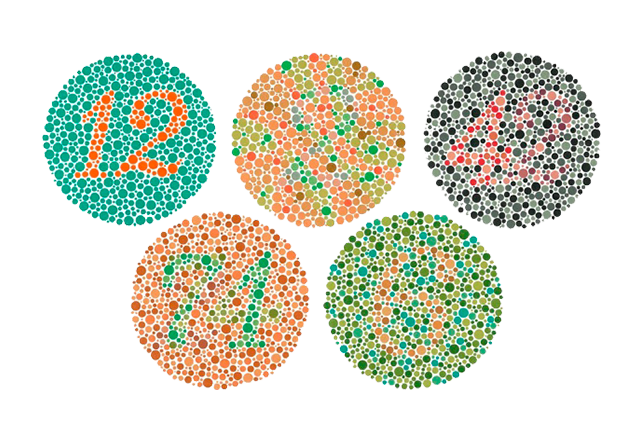Enchroma Lenses for Colorblindness

Color blindness has been around for as long as anyone can remember, but for the first time, one can see the vibrancy of color! Enchroma created glasses that can separate wavelengths of light like a filter. Normally, everyone has 2 receptors, red and green, that can filter light normally, but when there’s an abnormality, these receptors can misunderstand the wavelengths and mess up the colors.
With Enchroma’s glasses filtering out specific wavelengths of light, your brain will figure out the color and begin to display the right definition of color!
According to genetic population statistics it is estimated that 4 out of 5 cases are forms of partial color blindness (also called anomalous trichromacy) which are addressable using the EnChroma optical lens technology.
Color Blindness - Color Vision Deficiency
Approximately 1 in 12 men and 1 in 200 women have some degree of color blindness. There are different types of color blindness but the most common is known as ‘red-green color blindness.’
Color blindness (also called color vision deficiency by vision scientists), is a condition in which the retinal cone cells respond to light differently than normal. People with color blindness can usually still see colors but have color confusions or see certain pairs of colors so similarly that they cannot tell them apart.
Check out some designer frames we carry at our Northwood Vision optical.
TYPES OF COLOR BLINDNESS

Deutan Color Blindness
Deutan color blindness (also known as deuteranomaly) is a type of red-green color blindness in which the green cones in the eye detect too much red light and not enough green light.
As a result red, yellow, green, and brown can appear similar, especially in low light. It may also be difficult to tell the difference between blues and purples, or pinks and grays. Learn more about Deutan and other types ofcolor blindness.
Protan Color Blindness
Protans are people with protanomaly, a type of red-green color blindness in which the red cones do not detect enough red and are too sensitive to greens, yellows, and oranges.
As a result, greens, yellows, oranges, reds, and browns may appear similar, especially in low light. It can also be difficult to tell the difference between blues and purples, or pinks and grays. Red and black might be hard to tell apart, especially when red text is against a black background. Learn more about Protan and other types of color blindness.


Tritan Color Blindness
Tritan-type color vision is characterized by a loss of color discrimination for shades of blue and yellow but it is not typically a form of color blindness.
This can be caused by age-related factors, genetic factors, as well as exposure to certain toxins such as mercury. A complete diagnosis of color vision deficiency is not possible using online testing–consult an eye care professional for more information.


Are You Color Blind?
Try the EnChroma Color Vision Test
